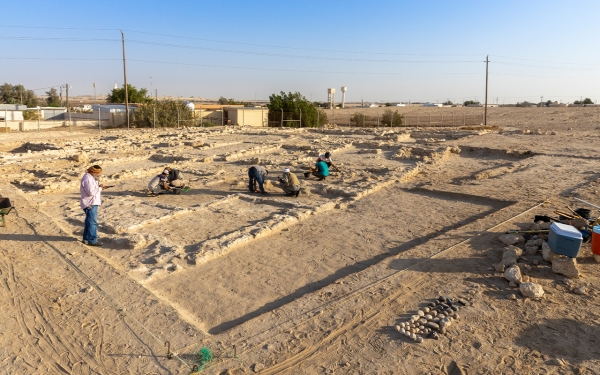
Thaj historical city is one of the cities of the historical Kingdom of Gerrha, which emerged in the third century BC in the northeast of the Arabian Peninsula. Some historical studies indicate that it was a settlement that witnessed multiple layers of human habitation and that it is the lost city of Gerrha. It is the largest archaeological site of the Hellenistic era in the eastern Arabian Peninsula, with an area of eight hundred thousand m2.
Thaj Historical City's importance
Thaj served as an important connection point, linking three significant sites at that time: the port of Jubail, Wadi al-Miyah, and the caravan route that connected southern Iraq with al-Hofuf, which is located within the current borders of al-Ahsa Governorate, in the Eastern Province of the Kingdom of Saudi Arabia. Originally, Thaj was an oasis known for its abundant water wells, and it was a refuge for the Chaldeans who had migrated from Babylon.
Thaj Historical City's construction style
The city of Thaj is surrounded by a fortified wall, which is the only one of its kind in the history of the eastern Arabian Peninsula, as it was influenced by two different cultures, the Greek architecture raised by the campaigns of King Alexander the Great on Western Asia, and the architecture of the south Arabian Peninsula. The walls are built using carved limestone blocks and polished stones, with a thickness of approximately five m and a length of around 2.5 kilometers. It encircles the city in a polygon-like shape and includes semi-circular and polygon shape towers for observation, with an estimated perimeter of five to six m.
On the southern and western sides of the fortress, there are architectural vestiges, likely designated for religious or social ceremonies. Additionally, there are about twenty wells to serve the town.
As the valleys penetrate the southern part of the city, and swampy lands cover the northern part, the middle part represents the area where the inhabitants of the oasis used to gather.
Thaj Historical City's commercial significance
Thaj was a major trade center, linking important trade centers at that time: the south of the Babylonian state, Najran, Al-Faw, al-Yamama, and Hajar villages, through the international land caravan routes represented in the Kanahari trail and al-Jamal trail. It also overlooked the sea through the archaeological port of al-Dafi on the Arabian Gulf, from which goods were exported to Akarus, Babylon, and the Euphrates.
Related quizzes
Related articles

